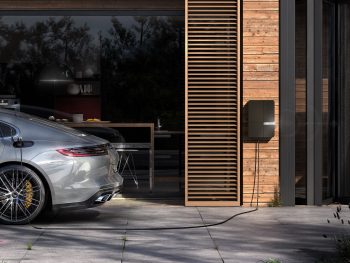Barriers to EV adoption revealed in new quarterly research
The EV market will struggle to grow to match consumer interest and governmental aspirations unless car supply, charging infrastructure and incentives align.

Norway is rated 43 out of 100 for EV readiness, compared to 28 for Germany, 27 for the UK, 25 for France, 13 for Spain and 8 for Italy
That’s the verdict from automotive data specialist Sophus3 following the publication of its first-ever quarterly EV Index, which explores why high interest in EVs is not being converted into sales.
Believed to be the first market-wide quarterly EV Index, the report explores why, despite growth in consumer awareness and interest in electric vehicles, sales are so low. The firm’s most recent analysis saw a 126% increase in interest in EVs from UK consumers in the third quarter of 2019, but EVs still account for just 2.9% of all new car sales in Britain.
To explore this, the EV Index awards scores for each country in the European Big 5 – UK, Germany, France, Italy and Spain – plus benchmark country Norway. Each country is marked out of 100 and based on three core pillars: consumer interest, EV model availability, and charging infrastructure.
The three pillars give an overall Index score out of 100, which represents a parity with internal combustion engine cars; a score of 100 would represent a complete readiness across all pillars for a shift to EV.
When held against Norway (which has a score of 43), the UK and the rest of the European Big 5 are trailing far behind. Germany comes in second with an EV Index score of 28. The UK follows with a score of 27 while France is rated with a score of 25, Spain at 13 and Italy at 6; the lowest of all six countries analysed.
The report reveals the need for incentivisation from governments to help consumers make the switch from petrol or diesel to electric cars, whether that be aggressive or progressive. For example, in Norway taxes on petrol and diesel cars are punitive to the point that buying an EV is the cheaper option, the opposite of the case in the UK.
In Germany, the next highest scoring country, the Government recently raised the financial contribution incentive for buying an EV from €4k to €6k.
In contrast, the UK Government’s decision to scrap the grant for PHEV in October 2018 prompted a steep decline in sales of PHEVs.
The Sophus3 data also examines manufacturer readiness to supply EVs to market, measuring the proportion of electric models on offer from manufacturers compared to conventionally powered internal combustion engine cars.
Secondly, it evaluates the pricing of the two types of vehicle to calculate the premium that an EV buyer currently pays, and how that may be changing over time.
Charging is also explored, and the EV Index assesses the country’s charging infrastructure in terms of how well it marries up to the existing gasoline/diesel filling station infrastructure in each market.
Scott Gairns, Sophus3 managing director, commented: “When cars became mainstream in the 1960s, taxpayers provided the billions needed to build the road infrastructure to make them usable. Electrification needs a similar level of ambition from European governments to match the online interest from car buyers.”







